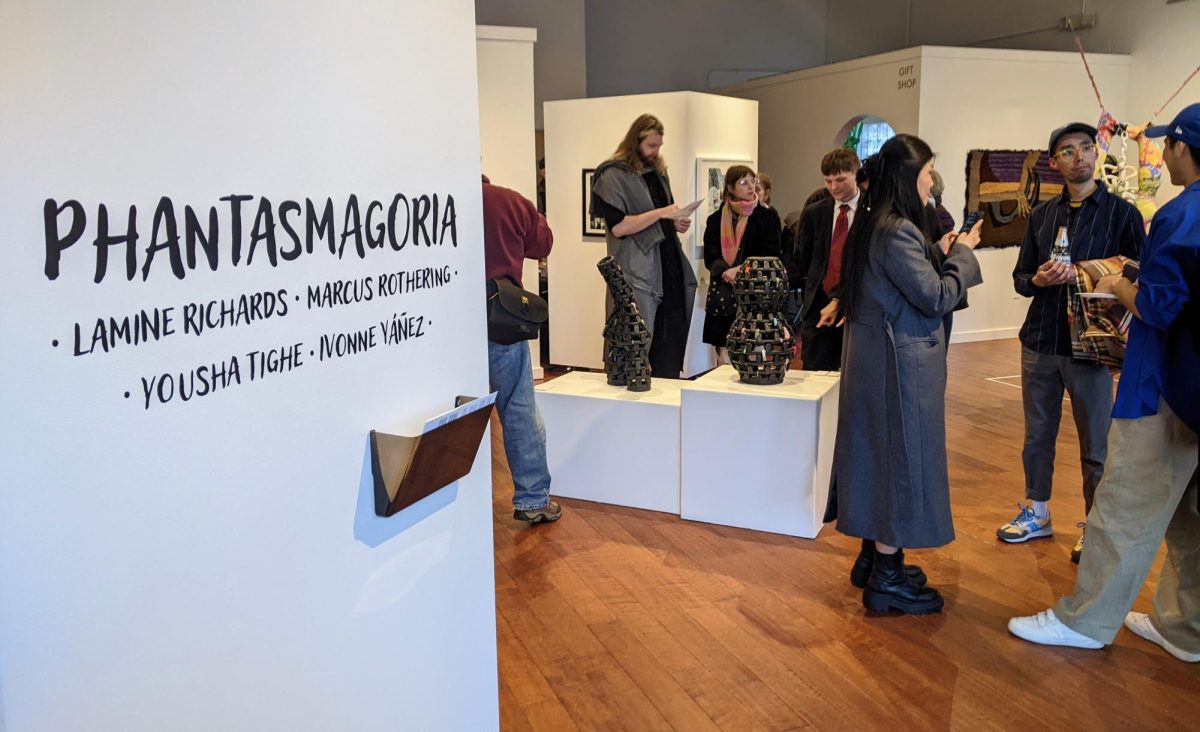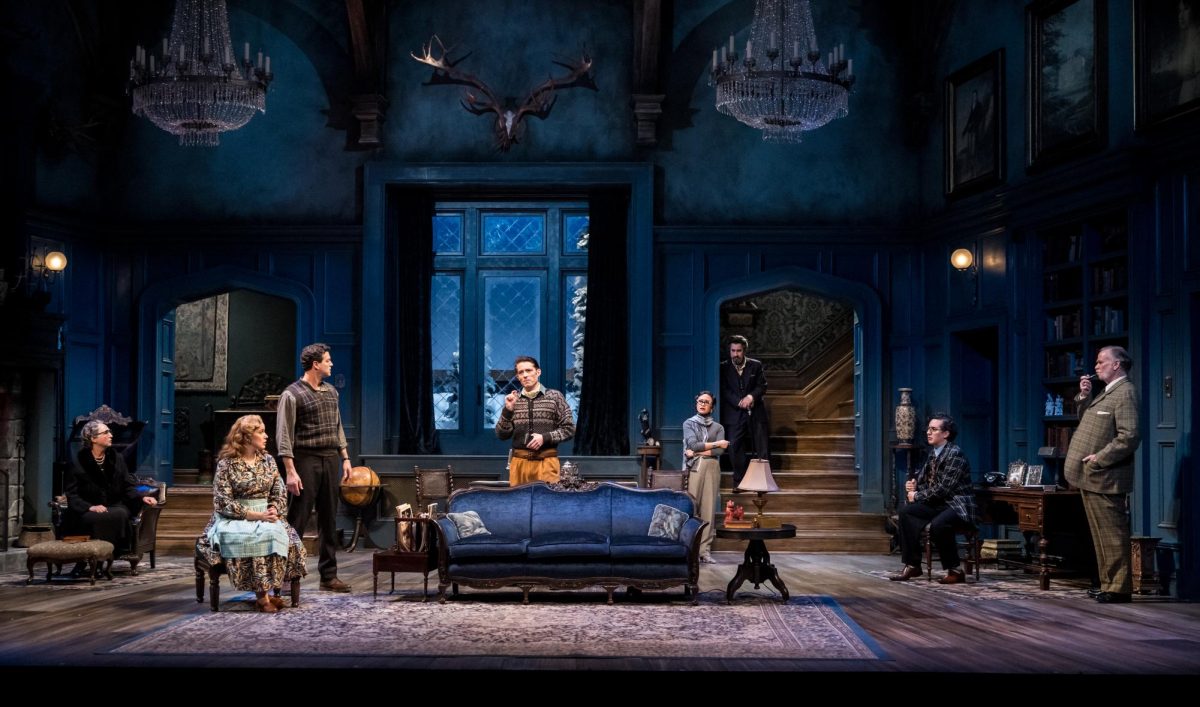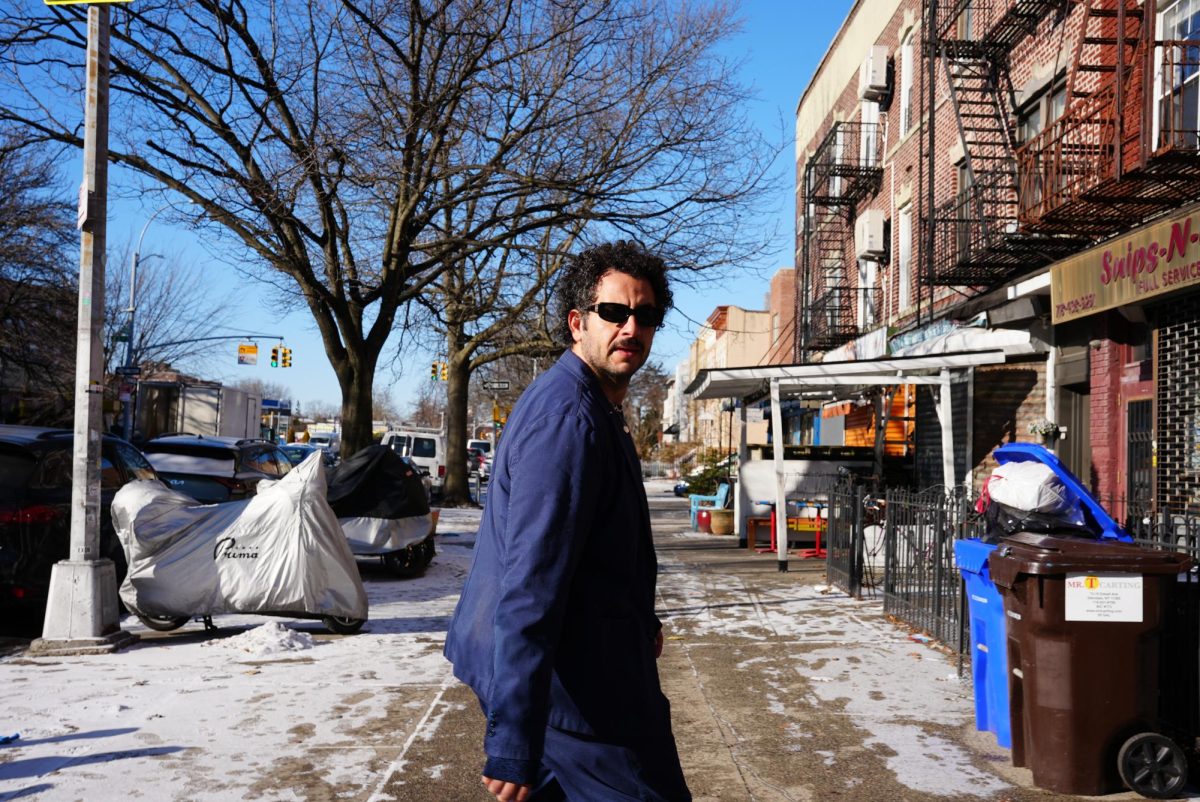Who: Hazel Belvo, Jim Denomie and Laura Migliorino
What: A Midsummer Night’s Stroll through “Tenuous, Though Real”
When: 6:30 p.m., Wednesday, The exhibit will be up until Sept. 16.
Where: Weisman Art Museum, 333 E. River Rd., Minneapolis
Cost: Free
The water we live near, the land we live on and the stories we tell — these are the three things upon which Minnesota artists often focus their attention, according to a new exhibit at the Weisman Art Museum.
“Tenuous, Though Real” features 33 Minnesota artists and will be open all summer. But wait, who are Minnesota artists? And what is Minnesota art?
“We have hundreds of so-called Minnesota artists in our collection,” said Diane Mullin, the curator who pulled works for the exhibit. “We had to go through this discussion about what it really means to be a Minnesota artist,” she said.
Mullin and her colleagues decided to make their definition loose. To qualify for the exhibit, an artist only had to have worked in Minnesota. The result is a diverse exhibit that captures the spirit of the state. The visual styles and media vary widely — giant paintings hang with colorful collages and understated photographs. But in terms of content, land, water and stories bring it all back home.
“We’re not making a scientific analysis here,” Mullin said.
The ties that bind Minnesota art together are tenuous, argued Rena Neumann Coen in her 1976 book on the art of the state. So they’re weak — no defining characteristics unfailingly string homegrown works together. But, as Coen argues, the ties are real.
This argument informed the title of the exhibit, “Tenuous, Though Real.” It was also a source of inspiration for its curator.
Mullin decided that these binds — the “tenuous, though real, sense of shared experience, an identification, however fleeting, with the Minnesotan scene” — could be categorized into three important elements of Minnesota: water, land and storytelling.
The first section holds all types of watery images, from artists’ depictions of bodies ranging from the shores of Lake Superior to the banks of the mighty Mississippi.
“Mudman, Hidden Beach,” a photograph by Katherine Turczan, is particularly striking: Although taken in 2004, the shirtless portrait of the Cedar Lake beach-goer who calls himself the Mudman has an old feel.
Images of both the industrial and natural ecosystem populate the land section of the exhibit. A series of photographs of grain silos and a painting of the University of Minnesota campus coexist with a giant vermillion drawing of the Spirit Tree, aka the Witch Tree, on Lake Superior.
Hazel Belvo did a number of studies of the Spirit Tree. She will be one of the artists walking around the Weisman Wednesday night. Jim Denomie and Laura Migliorino will join her for a discussion of the art in the exhibit and what it means to be a Minnesota artist.
The storytelling part of the exhibit is the largest, with the most nebulous parameters. It happens to be the most powerful: Julie Buffalohead’s paintings capture her experiences as a Native American woman, and Denomie’s painting takes an artistic bite out of the societal injustices Native Americans face.
“There are a lot of writers in this part of the country. We like to tell stories, we like to read stories, we like to hear stories,” Mullin said.
Mullin is an East Coast native, but the care she put into the exhibit proves that you don’t have to be from a state to be very much of a state. The spirit of Minnesota comes through in this collection. “Tenuous, Though Real” is organized and contained but teeming with social issues and history — just like the state it’s about.













